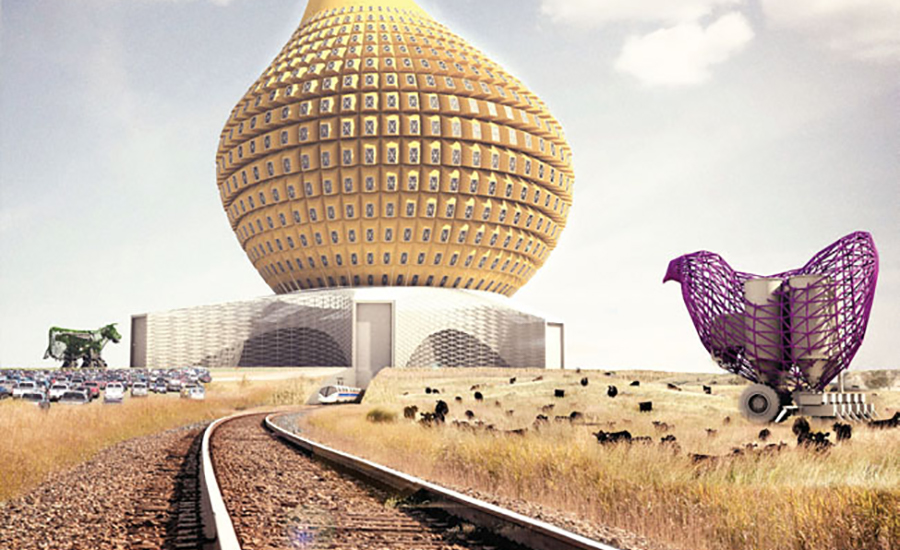For its contribution to the Biennial, Design With Company (Dw/Co.) is entering its own late—very late—scheme for Chicago’s Harold Washington Library Competition, which was held in 1987. At that time, Thomas Beeby, with his Postmodern design, beat out four other finalists: Dirk Lohan; Skidmore, Owings & Merrill; Helmut Jahn; and Arthur Erickson. In 2009, when the library was added to a list of the “world’s ugliest buildings,” Chicago Tribune architecture critic Blair Kamin described its neoclassic facade as “leaden” and its rooftop ornament as “cartoonish.”

Photo courtesy Design With Company
Though 35-year-old Dw/Co. cofounder Stewart Hicks says that the jury “got it wrong” when they selected Beeby’s design, he emphasizes that the “entry” he and his 36-year-old wife and partner Allison Newmeyer are submitting—a play on scale that would combine two dozen small buildings to form a “layer cake”—is not about righting that wrong. “We want to use it as a tool for thinking about issues that are at stake, such as the role of libraries in the city and the use of history as a design element. We are not saying that we have the solution.”
Founded in 2010, Dw/Co. is drawing from an even deeper well of architecture-competition precedents with its installation. Its “late entry” also riffs on another group of Chicago architects and their belated exercise, Ben Weese, Stuart Cohen, and Stanley Tigerman’s The Late Entries to the Chicago Tribune Competition. It was an invitation-only exhibition in 1980 that reexamined the seminal 1922 Chicago Tribune Tower competition and the tower typology in general.
For another Biennial program, Hicks and Newmeyer are partnering with a chef to create a culinary event still in the planning stages at the time of this writing. They will also be screening a film (to be determined) that inspires them and having a discussion with its director. All three activities are very much in line with the firm’s playful approach to the serious challenges of the built environment. Most of its projects are deeply rooted in physical place, particularly the Midwest, and are defined by elements of the surreal—“fantastic elements treated as if they really exist,” says Hicks. The firm’s recent book, Misguided Tactics for Propriety Calibration, funded by a grant from the Graham Foundation, is like a Delirious New York of the Midwest, analyzing and documenting, with drawings and collages, the region’s often dreamlike architecture, such as South Dakota’s Corn Palace and Wisconsin’s giant fish-shaped Fresh Water Fishing Hall of Fame.


